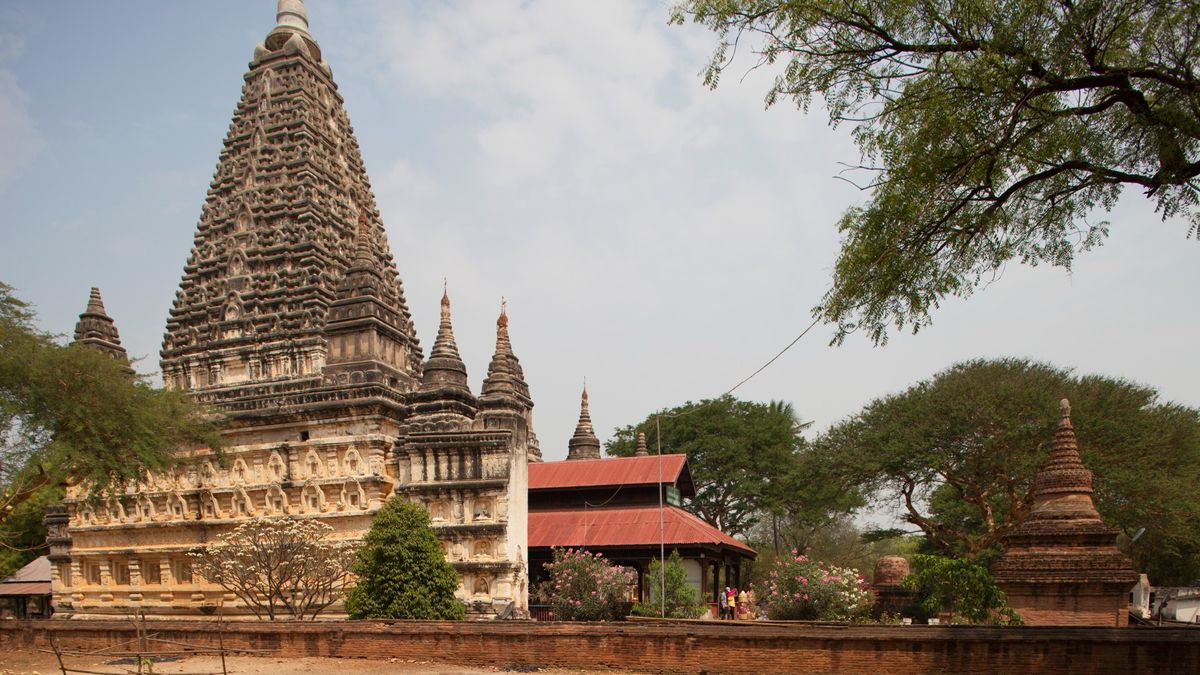The Mahabodhi Temple Complex in Bodh Gaya, Bihar, India. It is one of the Buddha's holy sites and is the location where he is said to have received enlightenment. (Image credit: Eye Ubiquitous/Universal Images Group via Getty Images)
A Sense of Doubt blog post #3458 - Satellite imagery reveals hidden monastery at Buddhist holy site
This news item caught my eye, and so a straight share today as I am a couple of days behind.
Thanks for tuning in.
https://www.space.com/buddha-mahabodhi-temple-satellite-imagery-buried-monastery
Satellite imagery reveals hidden monastery at Buddhist holy site: report
By"Archaeological treasure" is ripe at the Mahabodhi Temple Complex.
A buried monastery may be lurking underneath one of the sacred sites of the Buddha.
Satellite imagery revealed hidden structures in the Mahabodhi Temple Complex in Bodh Gaya, Bihar, according to a July media report in Indian news agency PTI, picked up by The Hindu and others. The temple is of the sites associated with the Buddha's life and said to be the location where he obtained enlightenment.
"The study has unearthed evidence of the presence of archaeological treasure beneath the soil of the [...] site and its surrounding areas," Harjot Kaur Bamhrah, additional chief secretary of India's art, culture and youth department, told PTI in The Hindu report.
The Mahabodhi Temple Complex is today dominated by a temple soaring 180 feet (55 meters) into the sky, slightly higher than the Statue of Liberty in New York City. It forms one of six sacred sites linked with the Buddha's life and enlightenment, according to the United Nations Educational, Scientific and Cultural Organization (UNESCO).
"This is one of the earliest brick Buddhist temples still standing in India, dating back to the 5th or 6th century CE," UNESCO added in a statement. "The complex is centered around a descendant of the original Bodhi tree under which the Buddha meditated and attained enlightenment."
The new research is being led by M. B. Rajani from the National Institute of Advanced Studies (NIAS) at the Indian Institute of Science Campus in Bangalore. Space.com asked Cardiff University, a collaborator on the research, about the availability of satellite imagery at this time.
"They are preparing a paper on the results and will be happy to share this and the satellite images when published," a Cardiff spokesperson told Space.com.
Cardiff did not specify which satellite or satellites were used to obtain the imagery, but archaeologists commonly use archival data or open-source data to reduce project costs.
The archaeologists are examining the temple as part of a study of Xuanzang, a 7th-century Buddhist monk who made a pilgrimage from today's China to India in search of Buddhist scriptures, the Hindu reported. Xuanzang's travels included visiting Mahabodhi.
"He is best known for his journey to India from 629 to 645 CE and his efforts to bring over 657 Indian texts into China. His writings had a significant impact on the development of Buddhism in China," the Hindu added.
Xuanzang's work also influenced Alexander Cunningham, a British army engineer who created an organization later known as the Archaeological Survey of India. Cunningham managed excavations in 19th century British-occupied India that included Sārnāth and Sānchi, according to Encyclopedia Britannica. India later obtained its independence in 1947 after about two centuries of subjugation under the British, detailed in this Britannica article.
+++++++++++++++++++++++++++++++++++++++++++++++++++++++++++++++++++++++
+++++++++++++++++++++++++++++++++++++++++++++++++++++++++++++++++++++++
- Bloggery committed by chris tower - 2408.06 - 10:10
- Days ago = 3322 days ago
- New note - On 1807.06, I ceased daily transmission of my Hey Mom feature after three years of daily conversations. I plan to continue Hey Mom posts at least twice per week but will continue to post the days since ("Days Ago") count on my blog each day. The blog entry numbering in the title has changed to reflect total Sense of Doubt posts since I began the blog on 0705.04, which include Hey Mom posts, Daily Bowie posts, and Sense of Doubt posts. Hey Mom posts will still be numbered sequentially. New Hey Mom posts will use the same format as all the other Hey Mom posts; all other posts will feature this format seen here.



No comments:
Post a Comment